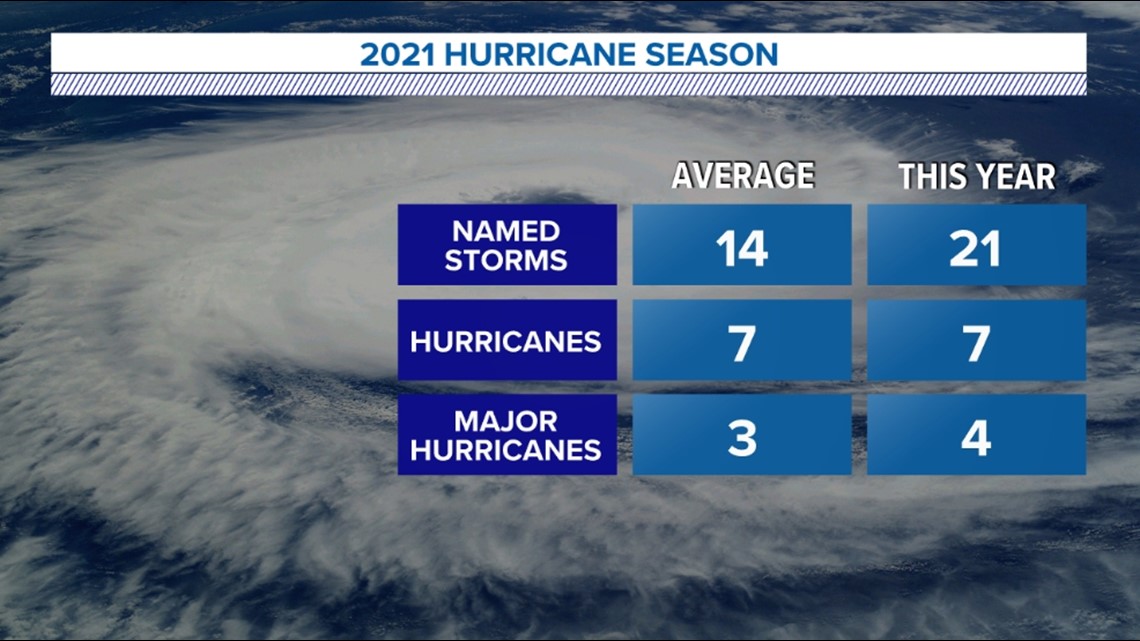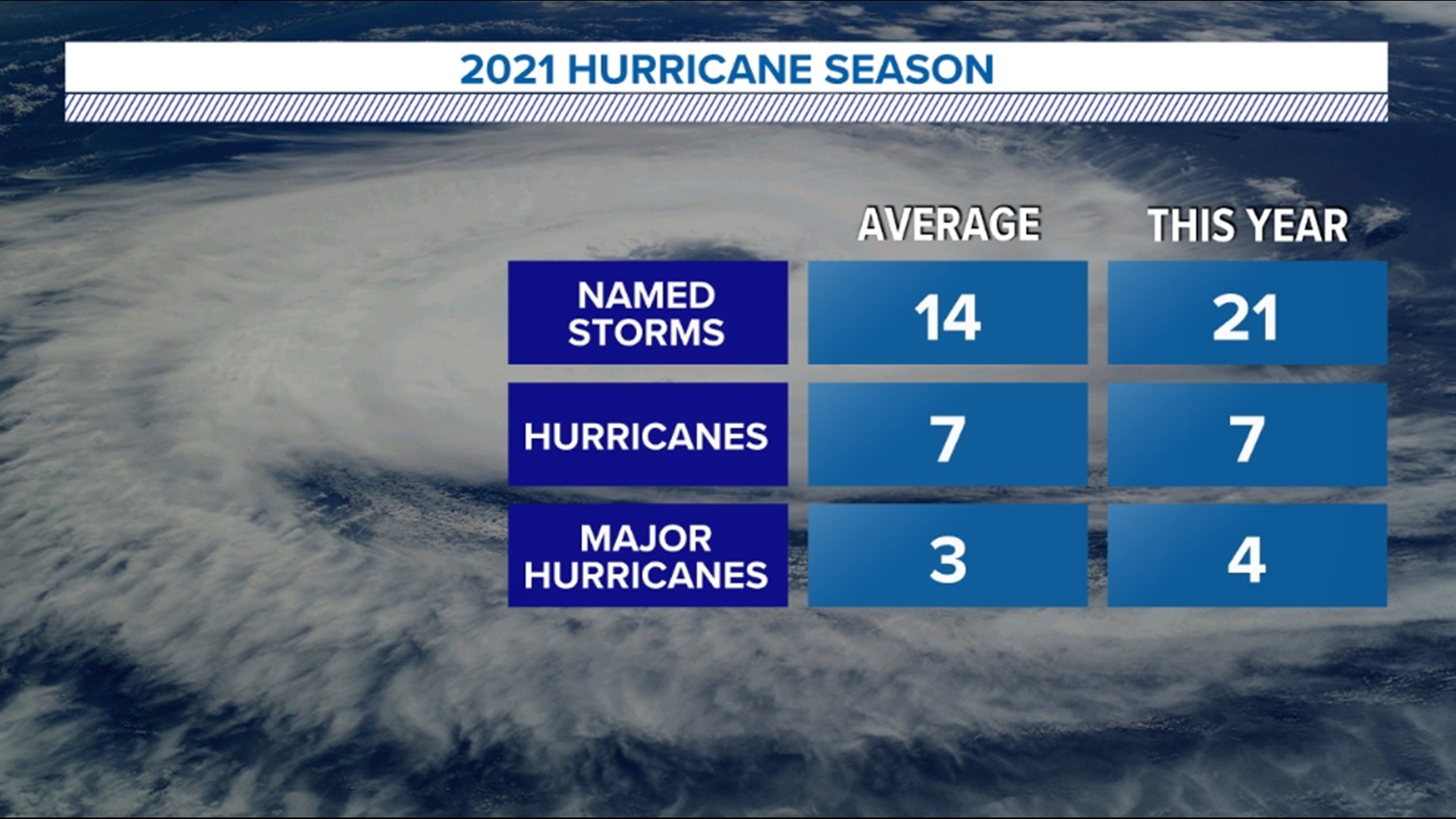YORK, Pa. — Another hurricane season for the record books has officially ended.
The 2021 season, which spanned from June 1st through November 30th, finishes as the third most-active year on record, with a total of 21 named storms.
It was also the sixth consecutive above-normal Atlantic hurricane season.
Not only were forecasters busy this season, but so were the NOAA Hurricane Hunters, who provide critical data from inside these tropical systems. The Hurricane Hunters completed a total of 58 hurricane eyewall passages, were in flight for over 460 hours, and dropped over 1,300 dropsondes, which gather the critical data from the atmosphere to help meteorologists forecast the path of a hurricane.
While Pennsylvania is not a coastal state, we're not immune from the impacts of tropical systems moving inland.
Our area felt the impacts from the remnants of multiple tropical systems this year, some of the worst was from the remnants of Ida.
Hitting the area in early September, the remnants of Hurricane Ida brought widespread flooding across South Central Pa. and a few tornadoes across the region.
So why did we have yet another above-average hurricane season? Some factors include above-normal sea surface temperatures early in the season, above-average West African Monsoon rainfall, as well as a La Niña pattern in the Pacific, all factors which can help increase tropical activity.
Climate change is also influencing these busy tropical seasons. According to the Intergovernmental Panel on Climate Change's Sixth Assessment Report, which was released in August of this year, scientists have high confidence that the global proportion of tropical cyclones that reach category 4 or 5 levels will continue to increase with our warming climate.


While tropical systems can happen outside of the bounds of the season, something we especially saw last year, it's unlikely we see much more impactful tropical activity through the end of the year. The 2022 hurricane season will officially start on June 1st, though hurricane season outlooks will first be issued in May by the Climate Prediction Center.

